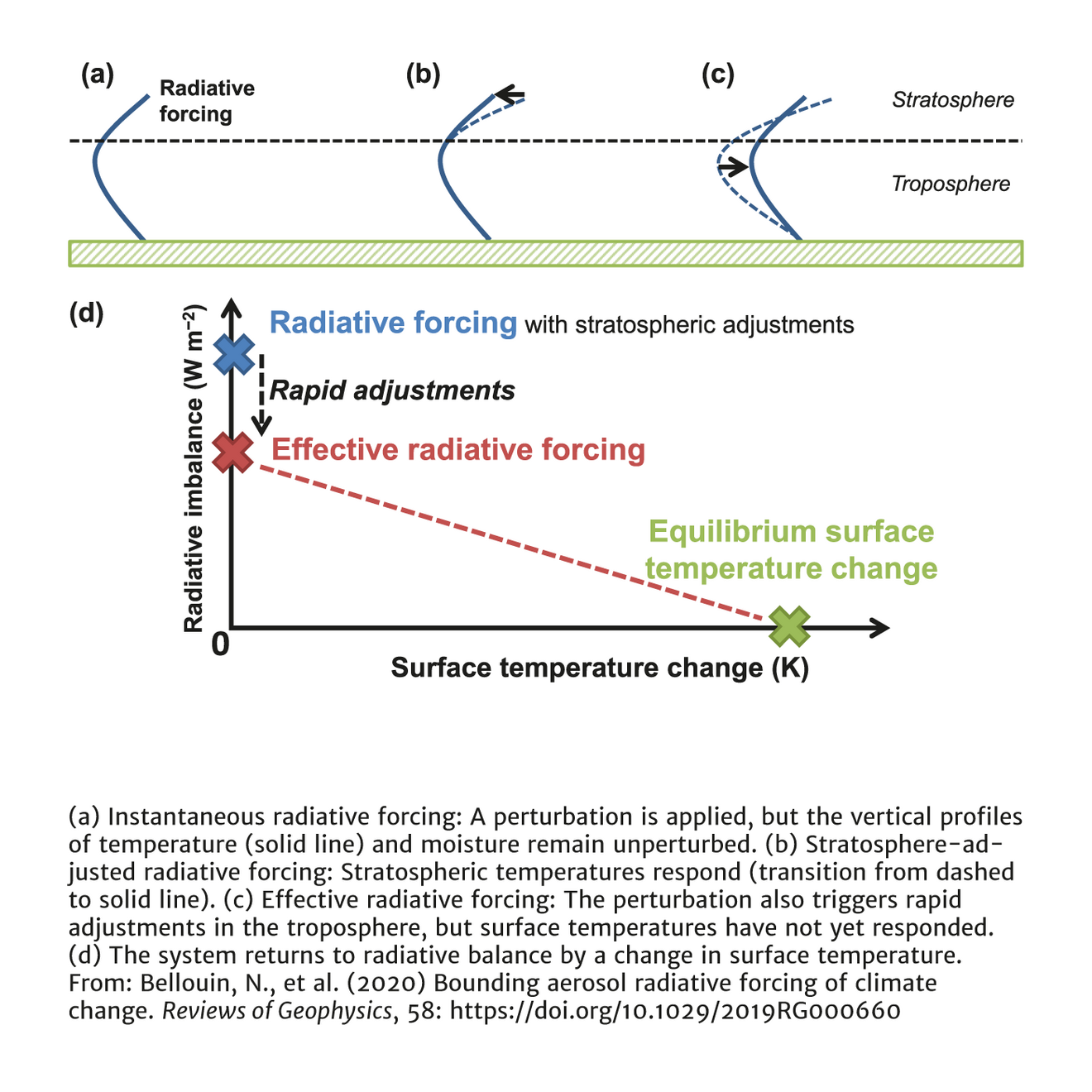Bounding Global Aerosol Radiative Forcing of Climate Change

Bellouin, Quaas and their co-authors conclude that the aerosol effective radiative forcing is likely between -0.6 and -1.6 W/m2. This estimate is consistent with the previous assessment by the Intergovernmental Panel on Climate Change (IPCC), in its fifth assessment report, but is more clearly and quantitatively reasoned. Given the breadth of expertise involved in the assessment, it is expected to be a cornerstone of the forthcoming sixth assessment report. It differs from past assessments in its ability to identify which lines of evidence most importantly constrain the estimates of the forcing. In a further break from past assessments it more strongly discounts the possibility that absorption, by carbonaceous aerosols, substantially offsets the effective radiative forcing. This results in a more negative upper bound. The primary effect of aerosol perturbations on cloud optical properties is shown to be relatively well constrained, although secondary effects are not necessarily small, and remain uncertain, in some cases even in sign. The study encourages the more systematic application of top-down approaches (which try to reconcile past emissions with past temperature changes) to test the plausibility of aerosol forcings near the stronger (more negative) range of the assessed range.
Original publication
Bellouin, N., Quaas, J., Gryspeerdt, E., Kinne, S., Stier, P., Watson-Parris, D., Boucher, O., Carslaw, K., Christensen, M., Daniau, A.-L., Dufresne, J.-L., Feingold, G., Fiedler, S., Forster, P., Gettelman, A., Haywood, J., Malavelle, F., Lohmann, U., Mauritsen, T., McCoy, D., Myhre, G., Mülmenstädt, J., Neubauer, D., Possner, A., Rugenstein, M., Sato, Y., Schulz, M., Schwartz, S., Sourdeval, O., Storelvmo, T., Toll, V., Winker, D. & Stevens, B.(2020) Bounding aerosol radiative forcing of climate change. Reviews of Geophysics, 58: https://doi.org/10.1029/2019RG000660.
More information
WCRP Grand Challenge Program: https://www.wcrp-climate.org/component/content/article/61-gc-clouds-circulation?catid=30&Itemid=267
Contact
Prof Dr Bjorn Stevens
Max Planck Institute for Meteorology
Phone: +49 (0)40 41173 422 (Assistant Angela Gruber)
Email: bjorn.stevens@mpimet.mpg.de
